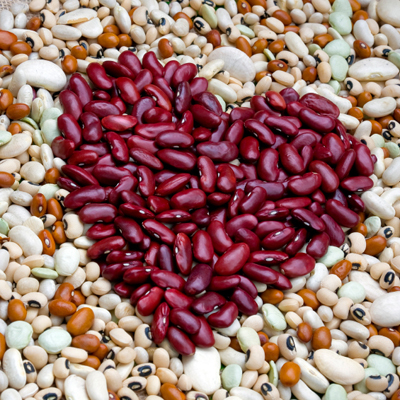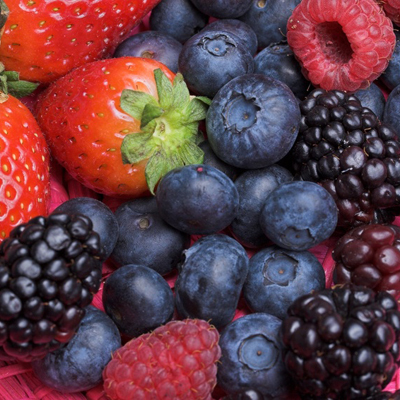Here are 30 tips to help you and your family become better prepared for an emergency.
Preparedness Tip #1
Take a moment to imagine that there is an emergency, like a fire in your home, and you need to leave quickly. What are the best escape routes from your home? Find at least two ways out of each room. Now, write it down — you’ve got the beginning of a plan.
Preparedness Tip #2
Pick a place to meet after a disaster. Designate two meeting places. Choose one right outside your home, in case of a sudden household emergency, such as a fire. The second place you choose needs to be outside your neighborhood, in the event that it is not safe to stay near or return to your home.
Preparedness Tip #3
Choose an emergency contact person outside your area because it may be easier to call long distance than locally after a local/regional disaster. Take a minute now to call or e-mail an out-of-town friend or family member to ask him or her to be your family’s designated contact in the event of an emergency. Be sure to share the contact's phone number with everyone in the family. During an emergency, you can call your contact who can share with other family members where you are; how you are doing; and how to get in contact with you.
Preparedness Tip #4
Complete an emergency contact card and make copies for each member of your family to carry with them. Be sure to include an out-of-town contact on your contact card. It may be easier to reach someone out of town if local phone lines are out of service or overloaded. You should also have at least one traditionally wired landline phone, as cordless or cellular phones may not work in an emergency. Visit
www.redcross.org or
www.ready.gov for sample emergency contact cards.
Preparedness Tip #5
Dogs may be man’s best friend, but due to health regulations, most emergency shelters cannot house animals. Find out in advance how to care for your pets and working animals when disaster strikes. Pets should not be left behind, but could be taken to a veterinary office, family member’s home or animal shelter during an emergency. Also be sure to store extra food and water for pets. For more information, visit the Animal Safety section on
www.redcross.org or visit the Humane Society Web site at
www.hsus.org
Preparedness Tip #6
Go through your calendar now, and put a reminder on it — every six months — to review your plan, update numbers, and check supplies to be sure nothing has expired, spoiled, or changed. Also remember to practice your tornado, fire escape or other disaster plans.
Preparedness Tip #7
Check your child’s school Web site or call the school office to request a copy of the school’s emergency plan. Keep a copy at home and work or other places where you spend a lot of your time and make sure the school’s plan is incorporated into your family’s emergency plan. Also, learn about the disaster plans at your workplace or other places where you and your family spend time.
Preparedness Tip #8
Teach your children how and when to call 9-1-1 or your local Emergency Medical Services number for help. Post these and other emergency telephone numbers by telephones.
Preparedness Tip #9
Practice. Conduct fire drills and practice evacuating your home twice a year. Drive your planned evacuation route and plot alternate routes on a map in case main roads are blocked or gridlocked. Practice earthquake and tornado drills at home, school and work. Commit a weekend to update telephone numbers, emergency supplies and review your plan with everyone.
Preparedness Tip #10
A community working together during an emergency makes sense.
- Talk to your neighbors about how you can work together during an emergency.
- Find out if anyone has specialized equipment like a power generator, or expertise such as medical knowledge, that might help in a crisis.
- Decide who will check on elderly or disabled neighbors.
- Make back-up plans for children in case you can't get home in an emergency.
Sharing plans and communicating in advance is a good strategy
Preparedness Tip #11
What if disaster strikes while you’re at work? Do you know the emergency preparedness plan for your workplace? While many companies have been more alert and pro-active in preparing for disasters of all types since the September 11, 2001 attacks, a national survey indicates that many employees still don’t know what their workplace plan is for major or minor disasters. If you don’t know yours, make a point to ask. Know multiple ways to exit your building, participate in workplace evacuation drills, and consider keeping some emergency supplies at the office. Visit
www.ready.gov and click on Ready Business for more information about business preparedness.
Preparedness Tip #12
You should keep enough supplies in your home to meet the needs of you and your family for at least three days. Build an emergency supply kit to take with you in an evacuation. The basics to stock in your portable kit include: water, food, battery-powered radio and flashlight with extra batteries, first aid supplies, change of clothing, blanket or sleeping bag, wrench or pliers, whistle, dust mask, plastic sheeting and duct tape, trash bags, map, a manual can opener for canned food and special items for infants, elderly, the sick or people with disabilities. Keep these items in an easy to carry container such as a covered trash container, a large backpack, or a duffle bag.
Preparedness Tip #13
Preparing for emergencies needn’t be expensive if you’re thinking ahead and buying small quantities at a time. Make a list of some foods that:
- Have a long shelf-life and will not spoil (non-perishable).
- You and your family like.
- Do not require cooking.
- Can be easily stored.
- Have a low salt content as salty foods will make you more thirsty.
Keep the list in your purse or wallet and pick up a few items each time you’re shopping and/or see a sale until you have built up a well-stocked supply that can sustain each member of your family for at least three days following an emergency.
Preparedness Tip #14
Take a minute to check your family’s first aid kit, and note any depleted items — then, add them to your shopping list. Don’t have a first aid kit? Add that to the list or build a kit yourself. Just add the following items to your shopping list and assemble a first aid kit. Consider creating a kit for each vehicle as well:
First Aid Kits - Assemble a first aid kit for your home and one for each car.
- (20) adhesive bandages, various sizes
- (1) 5" x 9" sterile dressing
- (1) conforming roller gauze bandage
- (2) triangular bandages
- (2) 3 x 3 sterile gauze pads
- (2) 4 x 4 sterile gauze pads
- (1) roll 3" cohesive bandage
- (2) germicidal hand wipes or waterless alcohol-based hand sanitizer
- (6) antiseptic wipes
- (2) pair large medical grade non-latex gloves
- Adhesive tape, 2" width
- Anti-bacterial ointment
- Cold pack
- Scissors (small, personal)
- Tweezers
- CPR breathing barrier, such as a face shield
- First Aid Manual
Non-Prescription and Prescription Drugs
- Aspirin or non-aspirin pain reliever
- Anti-diarrhea medication
- Antacid (for stomach upset)
- Syrup of Ipecac (use to induce vomiting if advised by the Poison Control Center)
- Laxative
- Activated charcoal (use if advised by the Poison Control Center)
- Prescription drugs, as recommended by your physician, and copies of the prescriptions in case they need to be replaced
For more information about first aid kits, visit
www.redcross.org.
Preparedness Tip #15
Keep at least a three-day supply of water per person. Store a minimum of one gallon of water per person per day (two quarts for drinking, two quarts for food preparation and sanitation). Store water in plastic containers such as soft drink bottles. Avoid using containers that will decompose or break, such as milk cartons or glass bottles. A normally active person needs to drink at least two quarts of water each day. Hot environments and strenuous activity can double that amount. Children, nursing mothers, and people who are sick will also need more.
Preparedness Tip #16
One of the easiest ways you can prepare for emergencies is to keep some supplies readily available. Every kit is unique and can be tailored to meet the specific needs of your family, but below is a general list of supplies you may want to consider:
Tools and Supplies (Essential Items are Marked with an Asterisk *)
- Mess kits, or paper cups, plates, and plastic utensils
- Emergency preparedness manual and a copy of your disaster plan, including your emergency contacts list
- Battery-operated radio and extra batteries*
- Flashlight and extra batteries*
- Cash or traveler's checks, change*
- Non-electric can opener, utility knife*
- Fire extinguisher: small ABC type stored near where fires are likely to occur such as a kitchen, or near a fireplace. It should not be kept in the disaster supplies kit.
- Tube tent
- Duct Tape*
- Compass
- Matches in a waterproof container
- Aluminum foil
- Plastic storage containers
- Signal flare
- Paper, pencil*
- Needles, thread
- Medicine dropper
- Shut-off wrench or pliers, to turn off household gas and water
- Whistle*
- Plastic sheeting*
- Map of the area (for locating shelters and evacuation routes)
(Continued in the next tip)
Preparedness Tip #17
Also include items for sanitation in your emergency supply kit. Consider the following:
Sanitation (Essential Items are Marked with an Asterisk *)
- Toilet paper, towelettes*
- Soap, liquid detergent*
- Feminine supplies*
- Personal hygiene items*
- Plastic garbage bags, ties (for personal sanitation uses)*
- Plastic bucket with tight lid
- Disinfectant
- Household chlorine bleach
(Continued in the next tip)
Preparedness Tip #18
Include at least one complete change of clothing and footwear per person in your emergency supply kit. We suggest long pants and long sleeves for additional protection after a disaster.
Clothing and Bedding (Essential Items are Marked with an Asterisk *
- Sturdy shoes or work boots*
- Rain gear*
- Blankets or sleeping bags*
- Hat and gloves
- Thermal underwear
- Sunglasses
Preparedness Tip #19
You should also keep a smaller version of your emergency supply kit in your vehicle, in case you are commuting or traveling when disaster strikes.
Emergency Kit For Your Vehicle
- Bottled water and non-perishable high energy foods, such as granola bars, raisins and peanut butter
- Flashlight and extra batteries
- Blanket
- Booster cables
- Fire extinguisher (5 lb., A-B-C type)
- First aid kit and manual
- Maps
- Shovel
- Tire repair kit and pump
- Flares or other emergency marking devices
Preparedness Tip #20
Teach children how to dial 9-1-1 in an emergency. Review emergency action steps with all family members:
- Check the scene and the victim
- Call 9-1-1 or your local emergency number posted by the telephone
- Care for the victim

